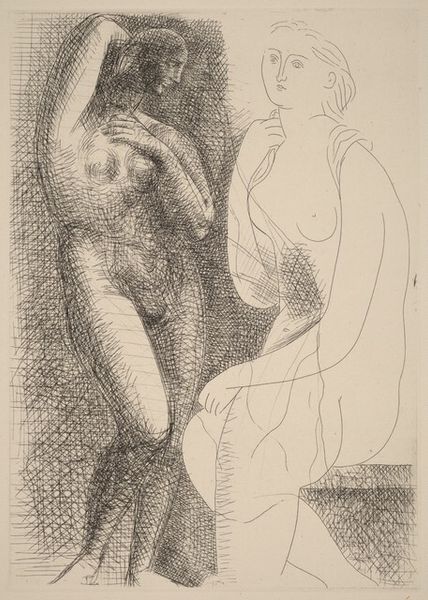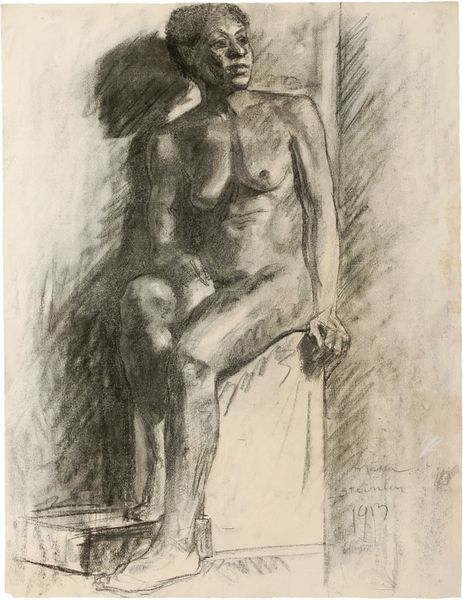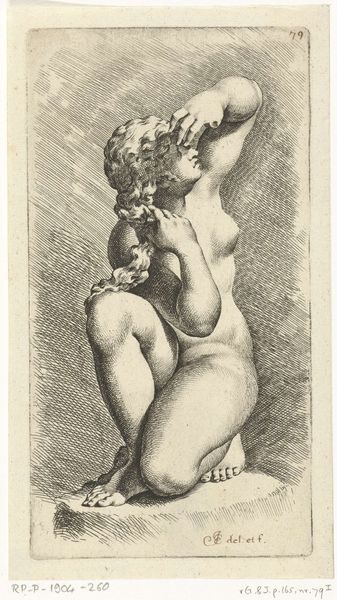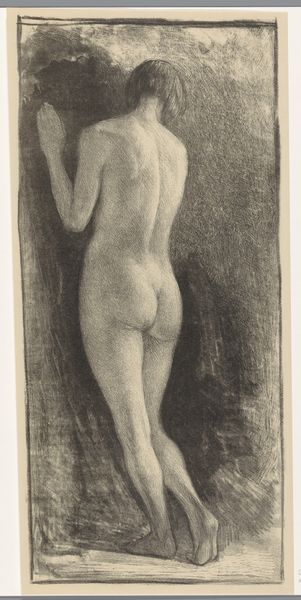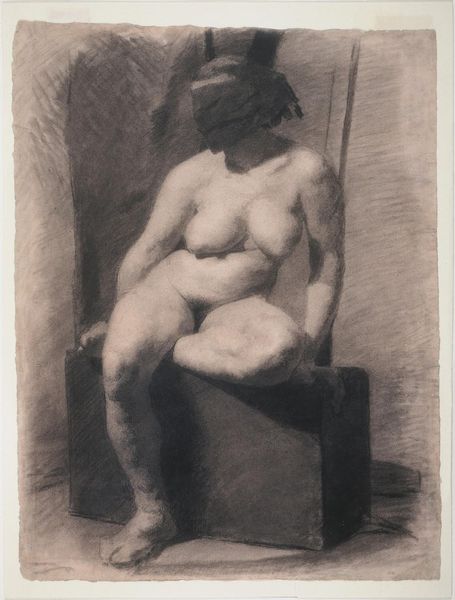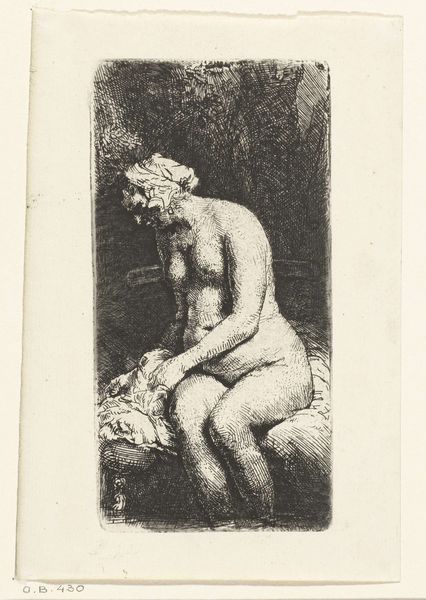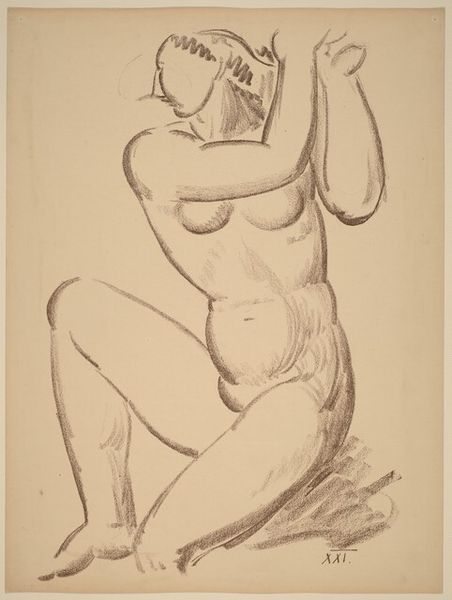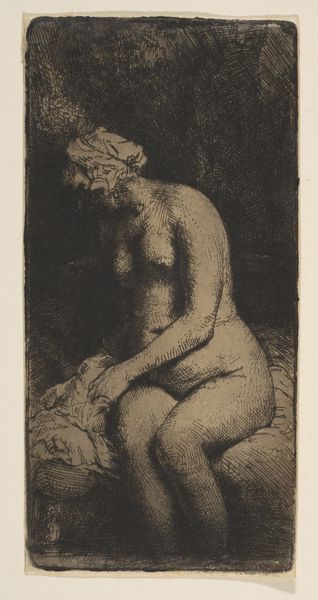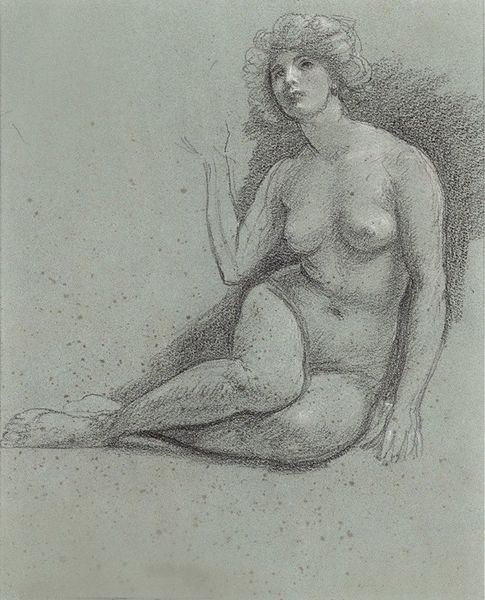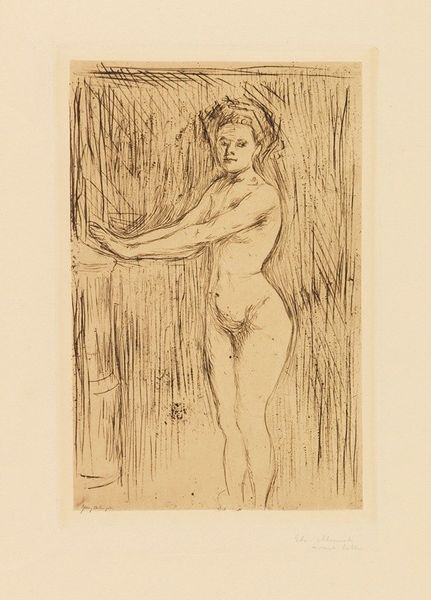
Dimensions: Image: 235 x 170 mm Sheet: 325 x 250 mm
Copyright: National Gallery of Art: CC0 1.0
Curator: Here we have "Untitled (Woman at a Table)," a print attributed to John Carroll and estimated to have been created between 1930 and 1940. The artwork depicts a seated woman in what appears to be an intimate setting. Editor: Intimate, yes, and somehow melancholic. She’s posed almost like a dancer caught mid-performance, but her eyes look away, lost in thought. The heavy shading adds to this sense of reverie, as though we're glimpsing a memory, not a real person. Curator: It's interesting that you picked up on that. Carroll, though known for his portraits, often presented his subjects in ambiguous contexts, prompting interpretation. What's especially relevant is how he uses the medium of printmaking—likely lithography given the soft tonality—to achieve this. The density of the marks around the figure highlight the sitter’s form, but it also situates her within a context created entirely out of layered labor. The paper, the ink, the process itself, all emphasize her as a created thing. Editor: Created, yes, and yet possessing this undeniable aura of… wistfulness. Even the wine glass on the table feels laden with unspoken words. I'm curious about the relationship between the woman and the artist. There’s a gaze here, but one tinged with tenderness. Perhaps, an understanding between creator and muse? Curator: Considering the date of the print—smack dab in the middle of the Great Depression—one can look to see how Carroll situates his work. Was it explicitly designed for gallery showings, or cheaper consumption and dissemination via a newspaper or magazine? These venues offered opportunities to disseminate Carroll's impressionistic approach, allowing a broader viewership and accessibility to images that might only exist among wealthier populations as drawings, etchings, or paintings. Editor: Thinking about consumption, that shadowy background, it nearly swallows the figure. Is she fading away or solidifying into existence right before our eyes? It’s beautifully ambiguous and keeps the eye constantly moving, discovering new details within the haze. Curator: The interplay of light and shadow is critical. And it really emphasizes how art production is intimately tied to social consumption. The figure as muse, then the print in the era. These interrelate to each other, to create meaning, to give Carroll a unique artistic vision in a complicated era. Editor: It's funny how the social realities blend into art, don’t they? This image feels so removed, personal even. Still, thinking of its historical and social circumstances really alters the entire feeling for me now. Curator: Precisely.
Comments
No comments
Be the first to comment and join the conversation on the ultimate creative platform.

